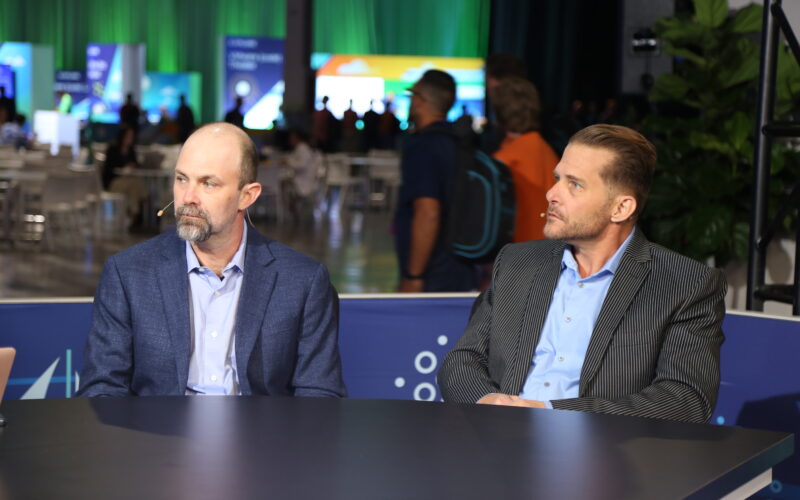With the fast-paced advances in technology, the challenges and opportunities surrounding cloud-native architectures and Kubernetes management are more pronounced than ever.
The shift toward decoupling traditional three-tier architectures to embrace more agile, scalable solutions such as Kubernetes is no longer just a theoretical conversation. It’s becoming a practical necessity for enterprises across the globe, according to Phil Trickovic (pictured, right), senior vice president of revenue at Tintri by DDN Inc.
Tintri’s Brock Mowry and Phil Trickovic talk with theCUBE about Kubernetes management.
“We’re seeing this across the stack from [the] biggest enterprise down through mid-size, even to the smalls, [which] are investigating the possibility of Kubernetes deeply,” he said. “But what they’re getting to a point of is that the non-cloud infrastructure or platform entropy that we’re experiencing with these three-tier architectures … that’s what Tintri’s been focused on and what Brock’s been focused on for the last three years is getting our QoS and ability to control those lanes exposed to those applications and move that forward.”
Trickovic and Brock Mowry (left), chief technology officer of Tintri, spoke with theCUBE Research’s Dave Vellante and John Furrier at VMware Explore during an exclusive broadcast on theCUBE, SiliconANGLE Media’s livestreaming studio. They discussed the challenges and innovations in integrating Kubernetes with legacy architectures and enhancing intelligent data management in modern IT environments.
Enhancing Kubernetes management for modern IT environments
As enterprises increasingly adopt Kubernetes, they face the challenge of integrating it with legacy systems and ensuring that their infrastructure can keep pace with the demands of cloud-native environments. Tintri has been at the forefront of addressing these challenges by extending its intelligent data management capabilities into the Kubernetes space, according to Mowry.
“We’ve basically been able to create a [container storage interface] driver that can consume storage off of our platform, do all the provisioning, everything like any Kubernetes admin would expect. But we also bring the power of Tintri,” Mowry said. “We’re looking at the ability to snapshot data out of a virtual machine and populate a persistent volume. That could be huge for companies that are trying to move large data sets in and out of Kubernetes environments.”
As organizations seek to modernize their IT environments, one significant hurdle is decoupling from legacy architectures that have been in place for decades. These systems, while reliable, are often not equipped to handle the demands of modern applications and data workloads, Trickovic concluded.
“Our intelligence goes from the application down all the way through the storage into the backup if you want to monitor that as well,” Trickovic said. “All statistics on the app, all performance stats, all localities etc., that you’ve got with VMware on us is being extended into those workloads.”
Here’s the complete video interview, part of SiliconANGLE’s and theCUBE Research’s coverage of VMware Explore:
Photo: SiliconANGLE
Your vote of support is important to us and it helps us keep the content FREE.
One click below supports our mission to provide free, deep, and relevant content.
Join our community on YouTube
Join the community that includes more than 15,000 #CubeAlumni experts, including Amazon.com CEO Andy Jassy, Dell Technologies founder and CEO Michael Dell, Intel CEO Pat Gelsinger, and many more luminaries and experts.
THANK YOU
Source link
lol

